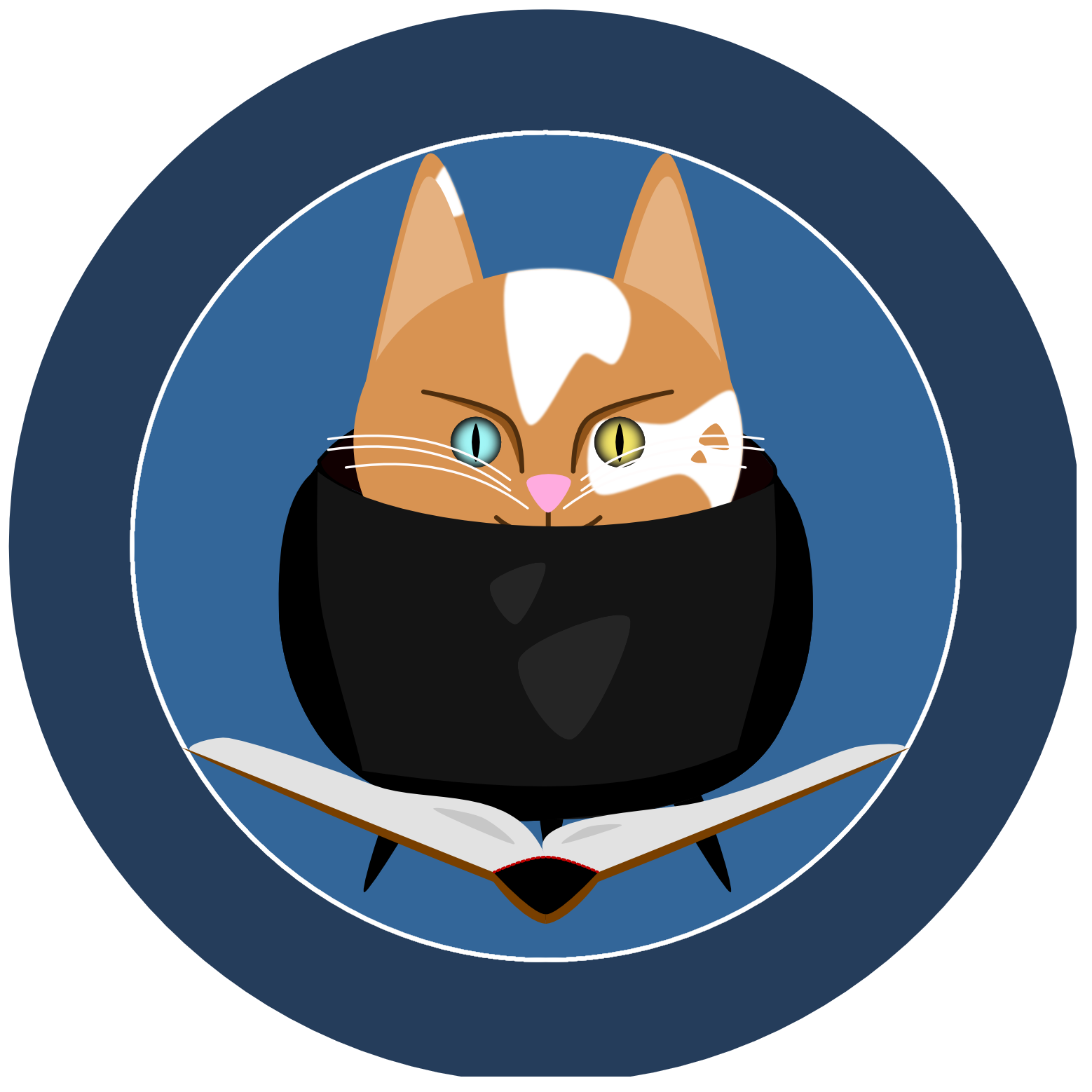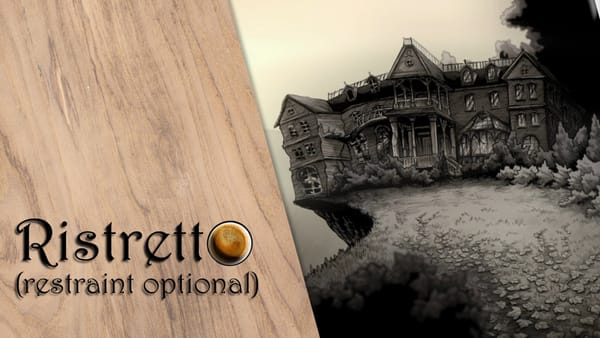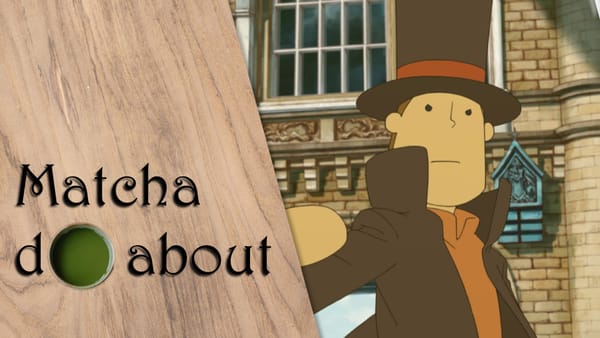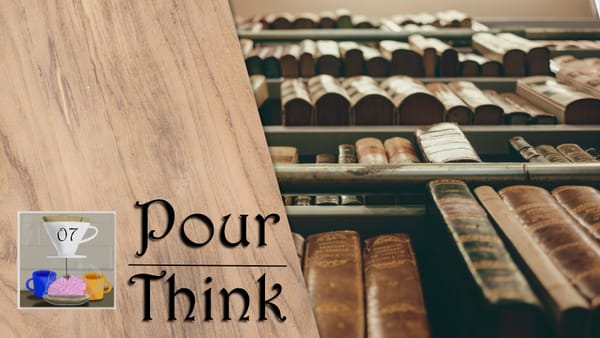Enotria: Setting the Stage for a Successful Soulslike
As a vibrant and creative take on the Souslike genre with an Italian stage play setting, Enotria, The Last Song, certainly makes a strong first impression. It does, however, suffer from poorly explained game mechanics.
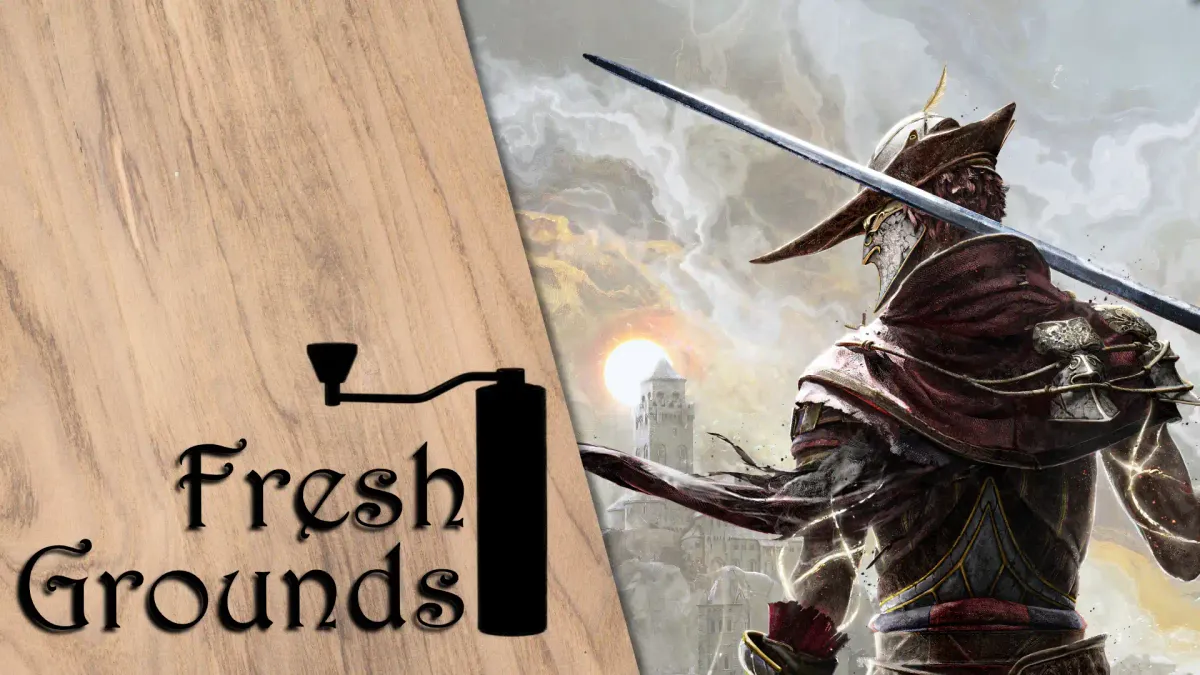
Quick Facts
Developer: Jyamma Games
Platforms: PC, XBox Series X / S, Playstation 5
Genre: 3rd person Action, Soulslike
Release: 19. September 2024
Price: estimated at 50$

Enotria: The Last Song is a Soulslike with a distinctly Italian flavour. Developer Jyamma Games describes it as "Summer Souls", and from a presentation perspective, that is definitely the case: Colours are warm and vibrant, and those who like to Praise the Sun will definitely find ample cause to do so here. The initial locations players visit are definitely inspired by the Italian countryside and its cities, and everything from landscape to architecture to enemy types fits right in, and feels like it belongs in this world. Additionally, the game is framed as a wicked, magical play: the initial weapons are stage props, and the player character is a wooden mannequin (hello Pinocchio?). It remains to be seen what the developers do with this interesting setting, and how they weave it into its story. I am very excited for it, though.
The nice, sunny look comes with a price in performance: The PS5 demo struggled to maintain 30 FPS in quality mode at 4k, but played without issues in Performance mode at 1080p.
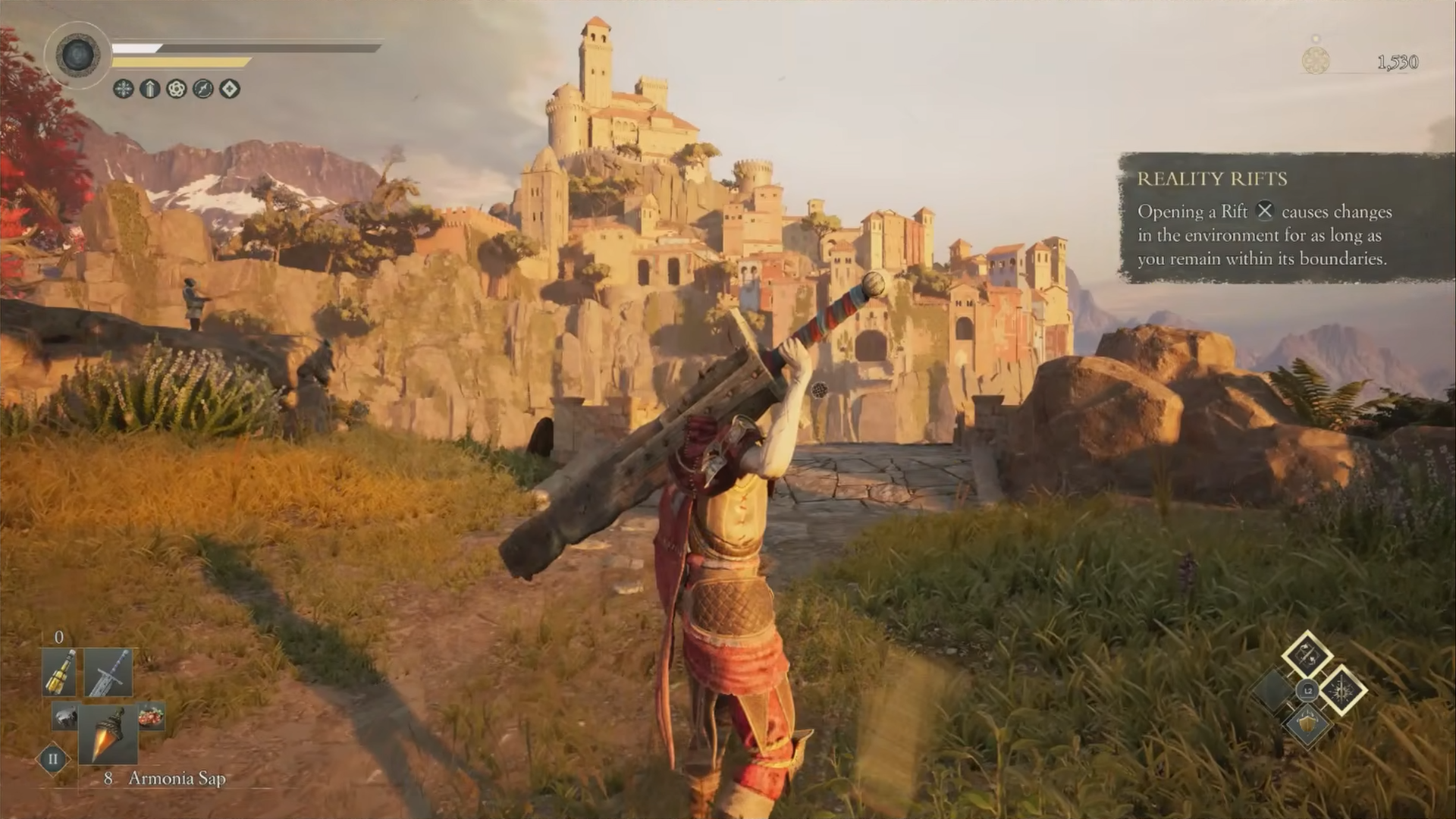
A Deliberate Combat Style
Enotria is a classic Soulslike that borrows its basic controls directly from its inspiration. Enotria plays very deliberately, much like the original "Dark Souls". This means that your actions carry a certain weight: Once you press the attack button, you are locked into that animation until it ends, there is no animation cancelling. This means that each action needs to be carefully considered, as attacking at an inopportune time may result in you getting hit.
This is in contrast to the faster pace of many modern soulslikes that do allow a measure of animation cancelling or input chaining, and is very apparent in rolling: Like in the Souls games, rolling grants i-frames that allow players to roll through enemy attacks unscathed. What players can't do in Enotria, however, is chain rolls seamlessly. While players can, of course, roll repeatedly, each roll is a deliberate press at the right time: If players press the roll button again while in a rolling animation, this will not execute a follow-up roll. The second roll needs to be properly timed to the end of the first rolling animation, or it will fail. This means the character can be hit between rolls if they are timed poorly.
Some will likely consider this a step back, as it makes combat slightly slower and less responsive, but I'd argue that this is a net-positive for the game overall, as it encourages deliberate planning and rewards it over mindless aggression or R1-spam.
Rolling isn't the only defensive tool in Enotria: The game also features a parry system, closer to the one in Lies of P, rather than the one in Sekiro. Parries have relatively strict timings, but are accompanied by satisfying visual and auditory feedback, making it very clear when players succeeded. Like in other games, parrying increases a bar, which will cause the enemy to stagger once it is filled. This allows players to execute a devastating attack by pressing attack again while close to the staggered enemy.
There is no block, so if players miss the parry they will take damage, effectively rendering them an alternative form of rolling, with the added benefit of building stagger on the enemy.
Players do have the ability to jump, which, so far, has been useful for exploration and jump attacks, but has not provided defensive benefits. It could be possible to jump over sweeps, but that remains to be seen.
Enotria's Stat Breakdown
Deliberate combat isn't the only thing familiar to genre veterans: The game features stats that you level up for different benefits. This requires collecting Memoria by defeating enemies, which can then be used to raise stats.
Enotria features the following five stats:
- Fortitude: Increases Health, Attack Power, Defense
This boosts your HP total and physical damage, and reduces the damage you receive from physical attacks. - Cunning: Increases Stamina, Attack Power, Status Power
Stamina is your resource bar for actions such as attacking or dodging, Status Power dictates how powerful status effects are when they proc. - Attunement: Increases Elemental Power, Line Charge, and Status Negation
As far as I can tell, Elemental Power is your Magic Attack Stat. Line Charge Governs how quickly your Mask Lines (active skills) charge, and Status Negation dictates your resistance to various status effects. - Alacrity: Increases Stamina, Luck, and Carry Capacity ("how many items you can carry")
Luck influences how often you receive drops from enemies, while Carry Capacity is explicitely worded as "how many items you can carry". It is unclear whether this is an actual inventory slot limit. - Erudition: Increases Ardore Power, Elemental Defenses and Line Charge
Ardore Power governs the Strength of your Mask Lines, Elemental Defense Governs your resistance to elemental damage.
You may notice the absence of a distinction between "Strength" and "Dexterity" or similar. All physical damage in Enotria uses a single stat, Attack Power, which is mirrored for "Elemental Power" and magical attacks.
This makes for a robust gameplay foundation, on which Enotria builds its more advanced systems.
Elementary Confusion
In addition to physical damage, Enotria employs a system of Four Elements that cause corresponding status effects. They may confuse you on a first read, though. Have a look:
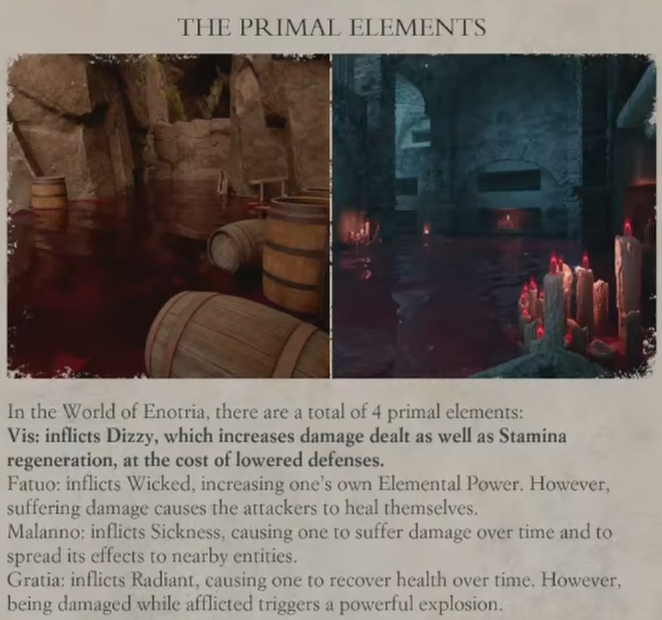
What puzzled me when I first read these effects - and what makes them really interesting - is that they each confer benefits as well as negatives:
Vis, for instance, increases the damage and stamina regeneration of the victim, but makes them take more damage. Essentially, players are buffing an enemy's offensive capabilities for a reduction of their defense. You better not get hit!
On the flipside, this means players could also use an item to inflict Dizzy on themselves, and thereby up their own offensive capabilities at the expense of defense.
Similar things hold true for the other status effects, except for Malanno, which has strictly negative effects.
This system is certainly more interesting than a strict division between buffs and debuffs, but is hard to understand initially.
What makes this worse, is that the above tutorial is shown to players at specific times: The first time at the beginning of the game, a second time further in. The first time players see this, this is likely too much information, and, critically, there is currently no way to bring this tutorial up again for reference.
Please, add a tutorial menu section that contains these explanations. Your game has complexity to it, and that's good, but please make it easy for people to educate themselves how your game works.
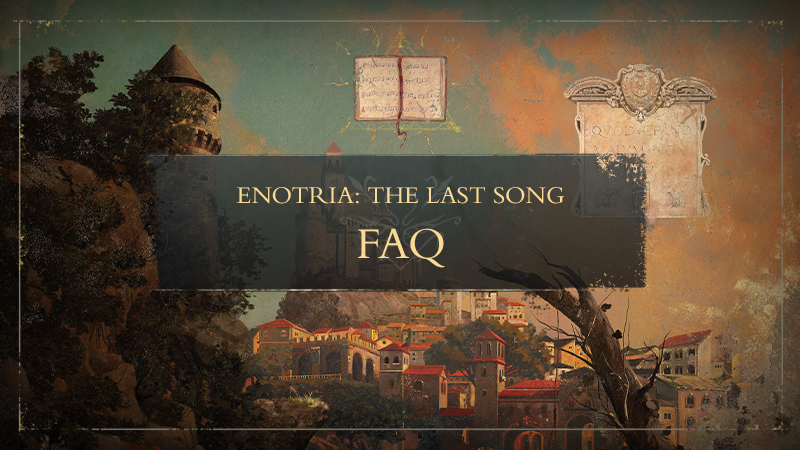
Link to the FAQ
In a recent FAQ, the developers have clarified part of this confusion, and have confirmed that these status effects do indeed confer benefits and drawbacks, but the in-game tutorials and text really should be enough to make players understand the rules at play, because, similarly, the stat spreads for weapons have been less than clear. Look at this example of a weapon's stats, and the explanation offered by the developers:
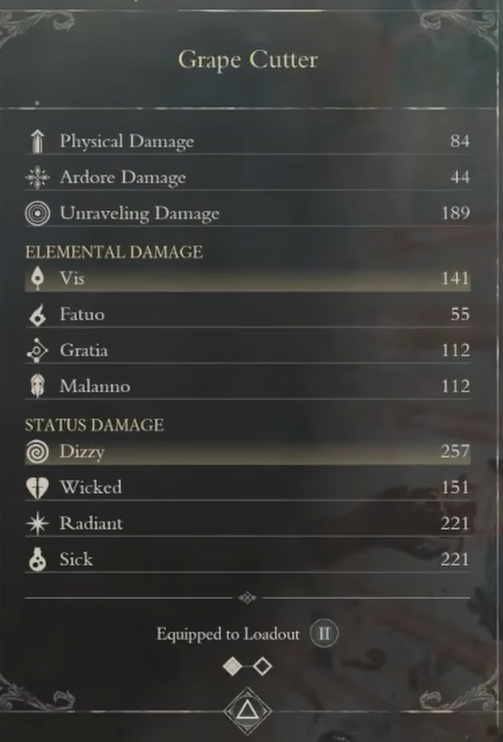

We are making it so you see the status damage that you would do IF you infuse your weapon (same for element). If the row is highlighted that means that element/status is innate and active by default. If you infuse an innate weapon then you have BOTH the innate AND the infused element/status… and if you infuse a weapon with the same element as its innate you get double elemental damage/status
A different part of the interview talked about the use of gems - the third item that you equip alongside your two weapons - and its function.

Gems modify the parry: upon parrying an attack, depending on the gems you have equipped, the damage is either mitigated or negated entirely, this also changes if the attack was ranged or melee. For example in the demo we have the “Unpolished gem” that is the easiest to use however it doesn’t inflict a lot of unraveling damage and only partially reduces elemental damage even if the parry was perfect. The “hardened stone” and “Indaco tear” are harder to use but more effective at inflicting unraveling, the first is stronger against melee physical damage and the other against melee elemental damage. We suggest reading the item descriptions for those ones as they usually hint at their effects
Hinting at effects can be alright, but here, even a mention of parrying would have been helpful. I assumed this was something akin to a Dark Souls ring - a stat rock, the gave me a percentage of defense - not a tool to parry with! The game never makes this explicit!
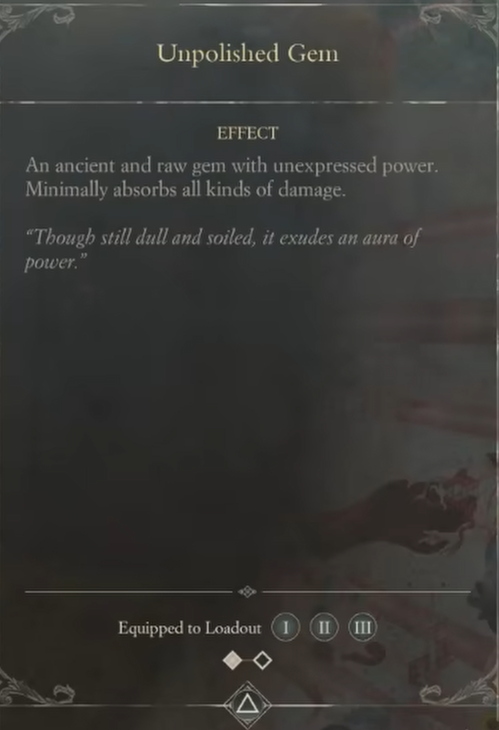
Don Your Masks
Chief among Enotria's more unique concepts is a loadout system that features masks. Players can find and equip different masks, that lend themselves to particular playstyles. One of the initial masks players find in the demo boosts heavy attacks and increases your Attack Power, thus it lends itself to a tanky build, for instance.
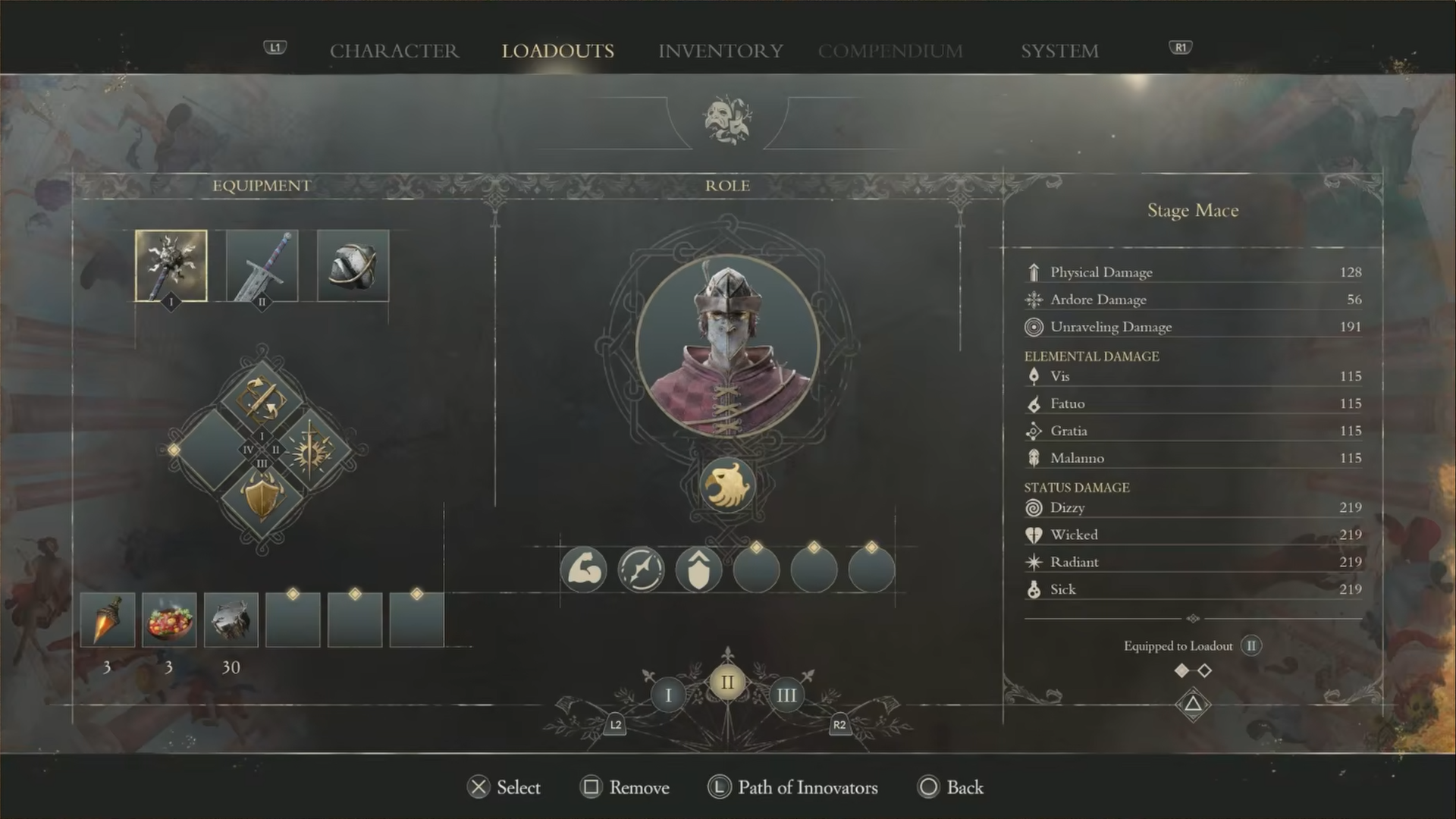
When resting at a Knot (this game's bonfires), players can prepare up to three different loadouts, each tied to a mask: This might allow a player who wants to focus on melee combat to have one loadout that is tanky and favours heavy, slow weapons, and a different loadout that features quick weapons, because both loadouts make use of the "Attack Power" stat to enhance their physical damage.
This is aided by a skill-system called "Mask Lines", that allows players to bind four active skill to a loadout. These skills can be used defensively as well as offensively: There is a skill that first executes a backstep, followed immediatly by an attack. This allows players to evade and counterattack with a single action and is immensely satisfying. Furthermore, the hit boxes on enemies allow for some serious hitbox porn: It is possible to duck under high enemy swings, if the attack animation of the player's weapon leaves them low enough. Bravo for this versatile and fluid system!
The aforementioned mask lines need to be charged before use, and they are charged through landing melee attacks. This means that it is impossible to play a pure caster, as players cannot use Mask Lines without engaging in melee combat. For better or worse, we're all battlemages now.
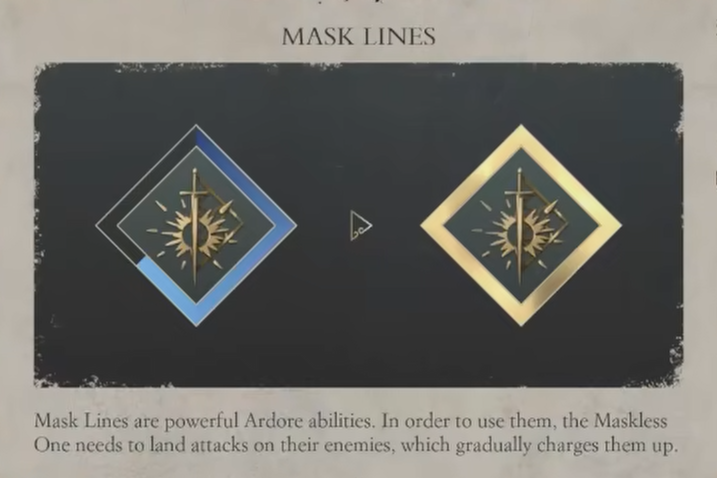
Another system features a talent tree, the Path of Innovators: Players can spend points here to unlock passive abilities that can then be slotted into masks to customise a build. The same talents can be part of different loadouts, if desired. They cannot be refunded in the demo, but it seems like players will eventually be able to unlock all of these perks.
Initially, this can seem daunting, as players are going to lack an understanding of how these perks interact and how they could be combined in a meaningful way.
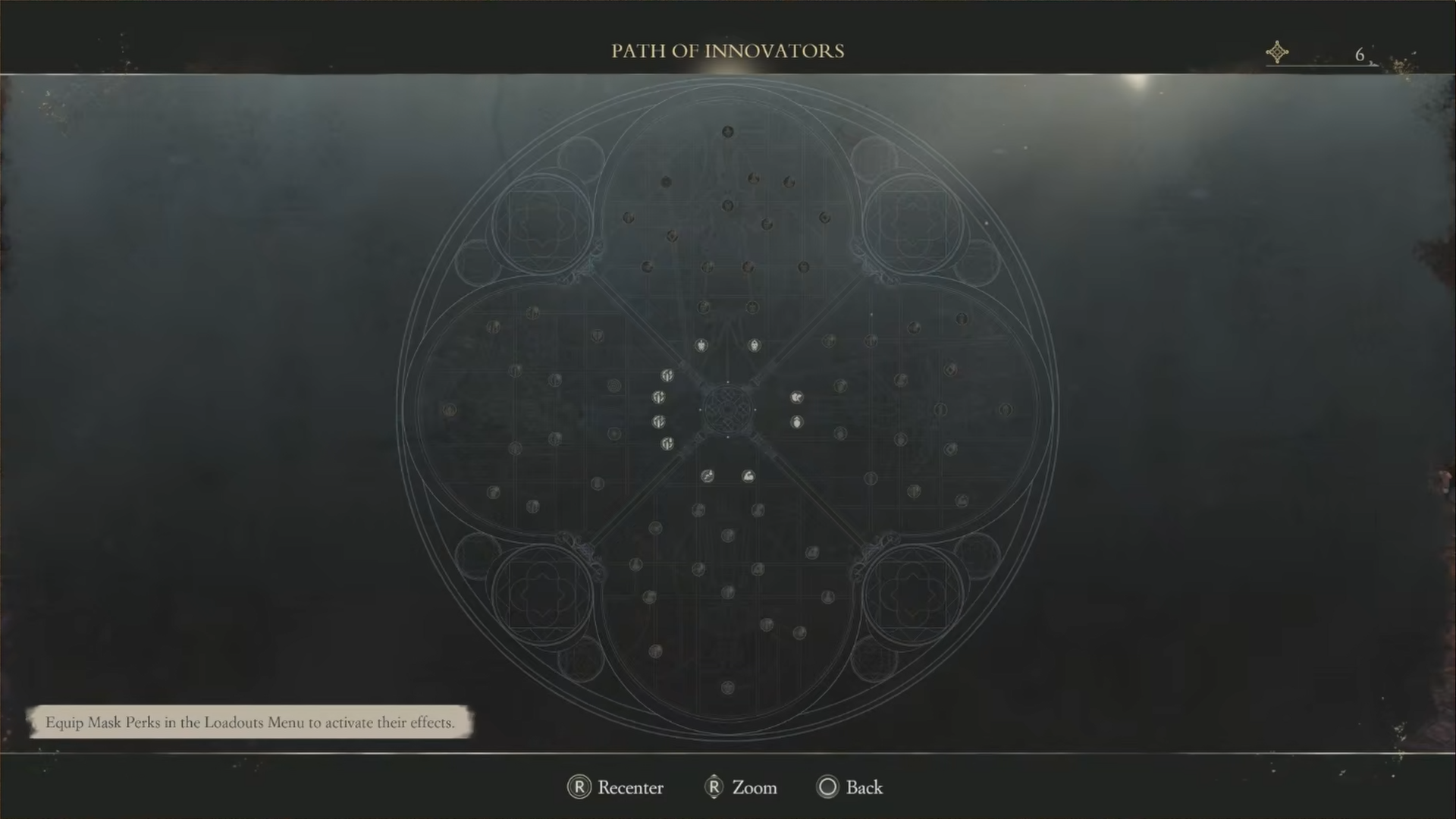
These passives can interact with different parts of a build: For example, there are certain passives that apply elemental damage to a weapon when a Mask Line skill is used. If this is combined with the above Mask Line, players can evade an attack, buff their weapon with an element and deal damage with a single skill activation.
As far as design choices and systems go, Enotria features an intriguing package that tries to do something innovative with powerful and interesting status effects, a flexible loadout system, extensive talents, and solid interactions between all these factors.
Rewarding Exploration and Experimentation
Exploring Enotria is fun and rewarding: The locales are varied, beautiful to look at, sprinkled with detail, and make it all worth your while. The levels are mostly linear, with alternate paths here and there, and some really nice shortcuts to uncover. The game makes good use of its verticality in exploration, too.
A really nice quality of life addition to the game is that players can refund upgrades. Say they put some upgrade materials and Memoria into a weapon, and decided they no longer want to use it. They can refund the upgrade to receive the upgrade materials used - only the Memoria invested is lost. This encourages experimentation, which is great for a game that so heavily invests in the status effects of its weapons.
As far was weapon variety is concerned, Enotria does offer distinct weapon classes, but fails to diversify weapon movesets within those classes. That is to say: all longswords have the longsword moveset, all maces have the mace moveset etc. It would have been nice to have weapons with unique attacks.
Additionally, some weapons classified as longswords look a lot like thrusting weapons to me, and it would be nice to have them as a separate weapon category. It feels odd to swing what looks like a rapier the same way you would a longsword.
Encounter Design
Encounters in Enotria are generally fun, but there are a few hiccups to the experience: Some enemies fire projectiles at the player, and while those can be dodged or even deflected, many of them are such tiny objects that they are essentially invisible. This makes them incredibly frustrating to avoid, as players have to pay more attention to the enemy animation, rather than the actual projectile to tell when it is coming.
Furthermore, some few encounters feel poorly designed. Take this particular example:
This really leaves you with no time to react
As you can see when you look at my health bar, I am hit by the enemy crossbowman before my character even finishes pulling out its hand of the object they interacted with. There was virtually nothing to be done here to avoid getting hit. While this challenge is optional, and this is the only occurrence of its kind, it's not the mark of great design when players have no way to respond to, or even perceive, a threat.
Enemies and Bosses
By and large, enemies in Enotria are fine. There's a few enemy types in the demo, and even though they are all humanoid so far, they are varied in their attack patterns and feel grounded in the world. Players are mostly assailed by farmers with pitchforks when out in the fields, and have to deal with citizens in town or the occasional lumbering guard. These are much tougher than the regular citizens, too, which is a nice touch.
There are other enemies in different areas, and they always fit into the environment they are in, which is something I appreciate. I don't mind that this might lead to lower enemy variety, if it keeps the worldbuilding consistent. Having inhabitants that suit their environments feels fitting for a stage play, after all.
As far as bosses are concerned, there were two in the demo, and while the initial boss fight was fine, the second one seemed overtuned to me. Now, granted, I might not have played optimally, I may have misunderstood certain mechanics in the game, or the developers might have raised the difficulty of this boss for the purposes of the demo.
Be that as it may, my experience fighting this second boss was quite taxing. It took me 1.5 hours to beat this second boss, and, initially, my damage against them was rather low. It wasn't until I upgraded another weapon to take advantage of its elemental damage and status effect that I saw a meaningful improvement in my damage output. Don't get me wrong: I really enjoyed the learning process, but I do fear that for some people, the difficulty of this boss will mean that they will stop playing - especially if they are not too keen on interacting with the game's elemental systems. That is their right, of course, just like it is Jyamma's right to maintain this level of difficulty.
One other thing I noticed when fighting the second boss was related to the game's camera: The second boss is rather tall, and when players activate the lock-on feature, the camera centers aims towards the middle of the boss' model. Because of the boss' height, this leads to a low camera angle, where you're looking up at the boss, rather than straight on, or slightly angled downwards, as would otherwise often be the case. For me, this angle made it harder to properly judge the distance to the boss, though I do feel like I became used to it over time.
Worth Keeping an Eye On
Overall, Enotria is a promising Soulslike with a unique setting, interesting, layered systems, and I eagerly await its release in September. If you haven't checked out the demo yet, I highly suggest you do. If you have played it, I would be happy to read your thoughts in the comments.
